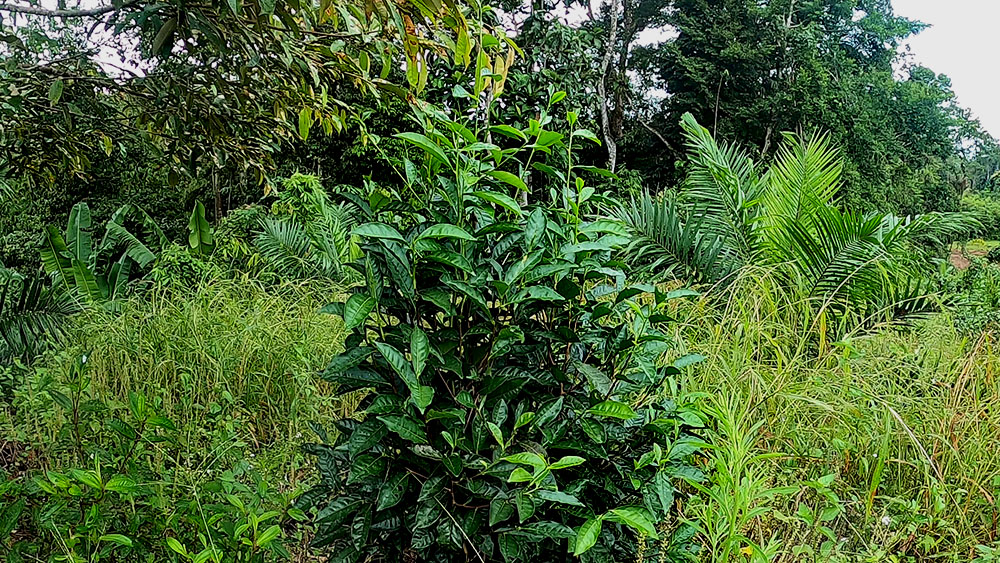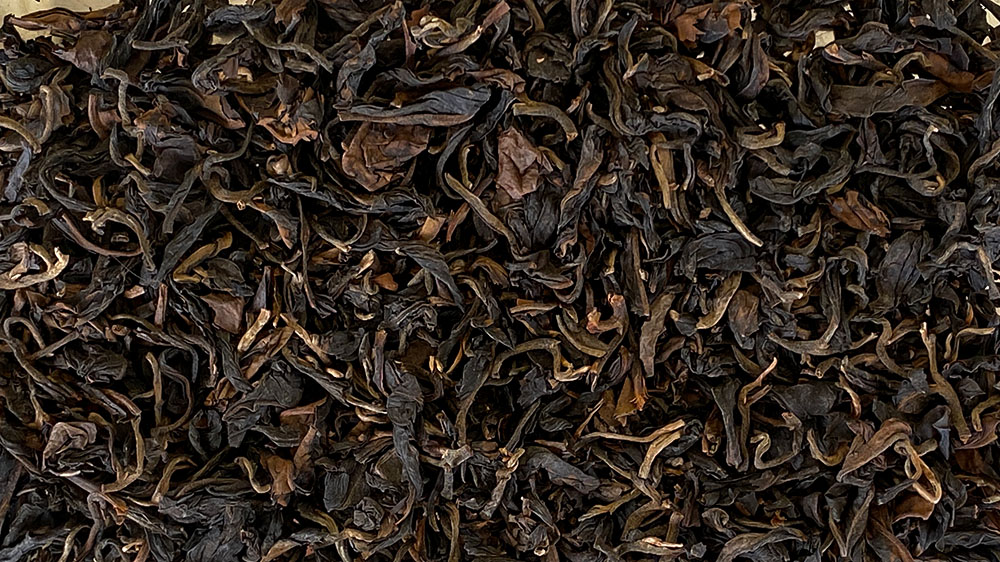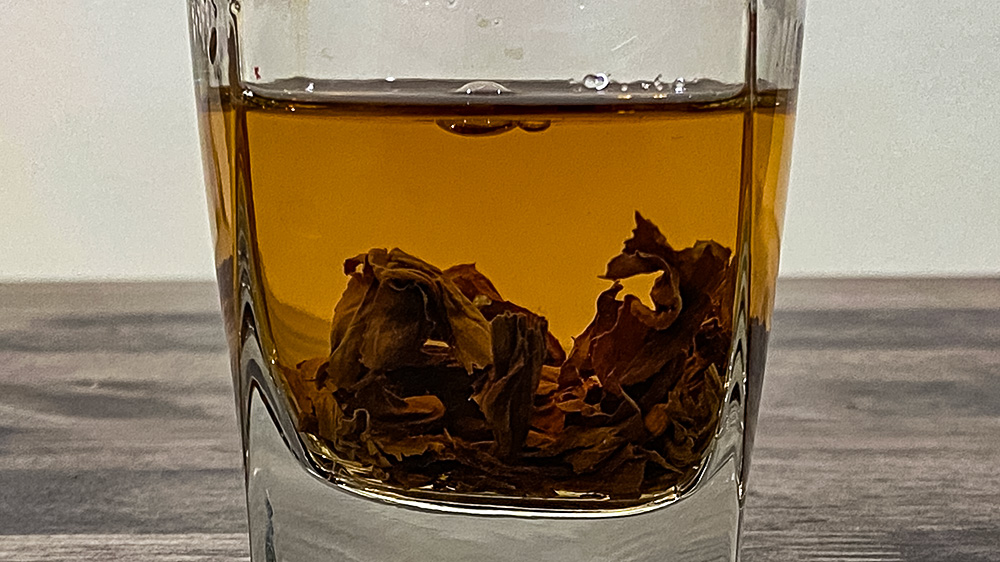|
Third test
in making black tea
Dr Stephen, Sidney and I went again to the grounds of the old
Mayang Tea Plantation in Sidney's 4 X 4 wheel drive vehicle.
We returned to Hercules Talen's farm plot (see trip account
here) hoping that heavy rain
will not end our tea picking.

The blue dot is where I am located in
Kuching.
The red pin is the location of the tea site.
|
|

L-R: Dr Stephen, Sidney and Clem on the day.
The area is now planted mostly with pepper vines and oil palm.
Surviving tea bushes are randomly found interspersed amongst the
farm crops.
|
|
 |
|
A tea bush amongst
weeds, oil palm and pepper vines.
It looks quite healthy albeit not maintained by constant
trimming.
The tea bushes have not been tended to for
around 15 years and so some have grown much taller than the tea
plantation regulation height of waist high. However, some tea in
Yunnan, China is
made from tea trees and so the unkempt ex-Mayang Plantation
bushes should not be a limitation to making good tea
nevertheless.
|
|

The shoots which should be plucked are "two leaves and a bud",
seen here in the centre of the photo.
|
|

Tea picking.
|
|
The four
principal steps in making black tea are: withering;
rolling; oxidation; and drying.

Freshly plucked tea shoots. We were
able to get more of the regulation "two leaves and a bud" this
time because we had more time on site and we found more bushes than on
the previous two trips.
|
|

After withering over night at room
temperature.
|
|

After withering, the leaves were hand rolled for some 30
minutes.
The leaves can be seen to be crushed
and moist with cell exudate.
They were then left to oxidize at room temperature.
|
|

The batch after 18 h oxidation.
The leaves are dark in color with orange bits and are
still limp and moist although much drier than after rolling.
|
|

The batch after 4 h drying in the sun to stabilize the product.
The tea is now dry and crispy at this stage.
|
|

The batch after crushing into smaller pieces.
|
|
It is said that tea should be allowed to age after it is made.
The color and flavor profile will change with time if properly
stored against deterioration (moisture is the main threat).
Thus, my test brew was only done one day after the tea was dried
and crushed.

The test brew: Leaves steeped for 3 minutes in just boiled
water.
|
|
Verdict:
-
The deep amber color is
indicative of a the fact that rolling was more intense this
third test production and perhaps also because the leaves
were broken up after sun drying;
-
Taste-wise: Even
though rolling was more intense and oxidation appeared to
have proceeded further (darker colors resulted), there
is still a distinct grassy scent and taste of green tea
(different from a blended black breakfast tea); distinct fruit notes were present;
-
A lower brew temperature around 80
- 90C, and not drinking with the tea leaves (remove them
after brewing time is up) reduced the grassy notes in the
nose and palate.
-
This batch is a
closer approximation of making small batches of homemade
tea. Sufficient young shoots were available for plucking and
all the stages of the processing proceeded as well as can be
expected. As with tea processing, constant practice and
small variations to what is done at each stage will slowly
bring the tea taste and aroma to one's preference.
Tea can be highly
varied depending on the entire process used. The variables
include: variety of tea plant; age and type of shoots plucked;
how the rolling is done and for how long; the degree and
conditions of oxidation; and the drying. There is also the
probability that terroir (influence of the soil and
climate), makes for different teas e.g. highland versus
low teas; Yunnan versus Assam versus Darjeeling teas. But, the
ability to make your own teas and the variability imparted by
the process make for fun in anticipating what kind of flavor
results from one's own homemade tea. |











